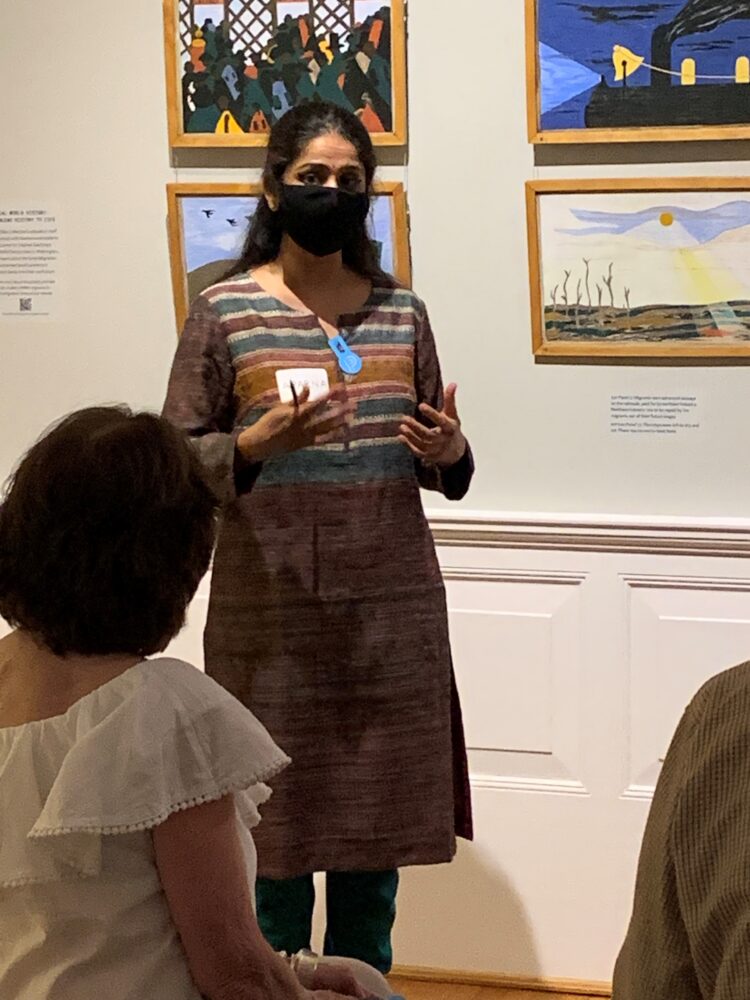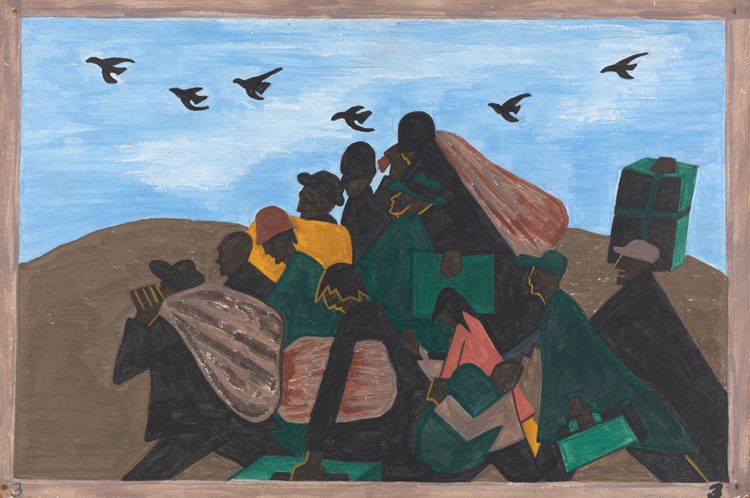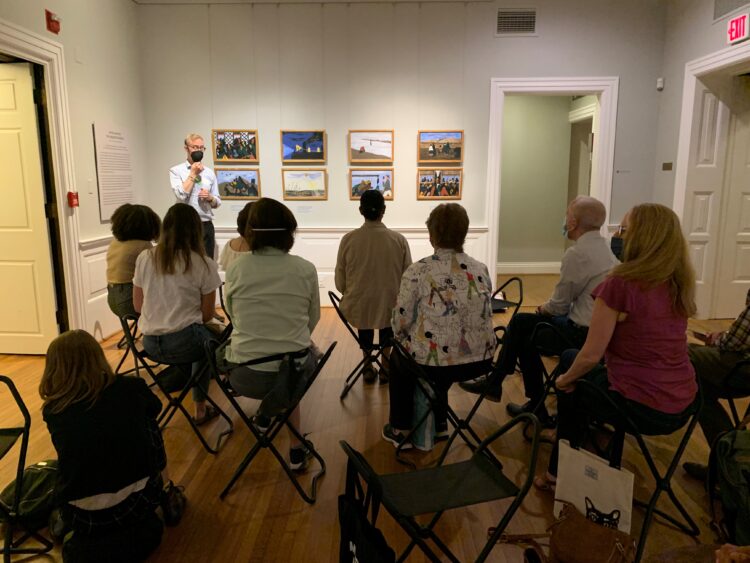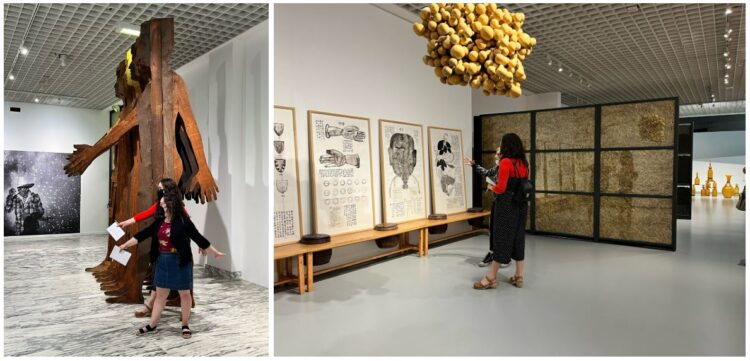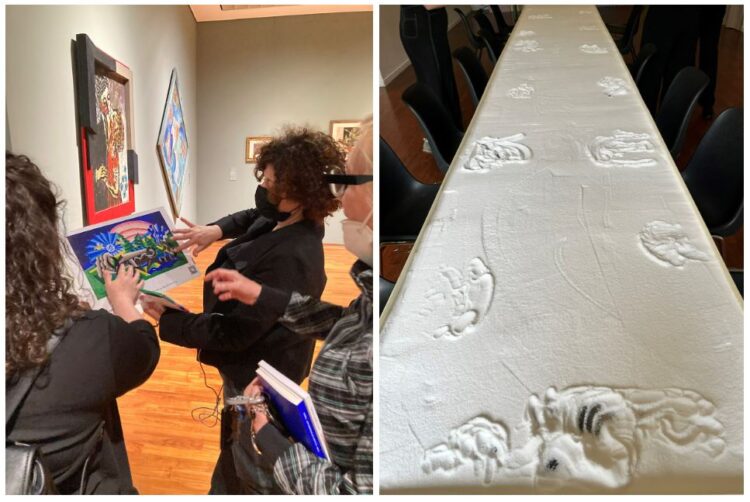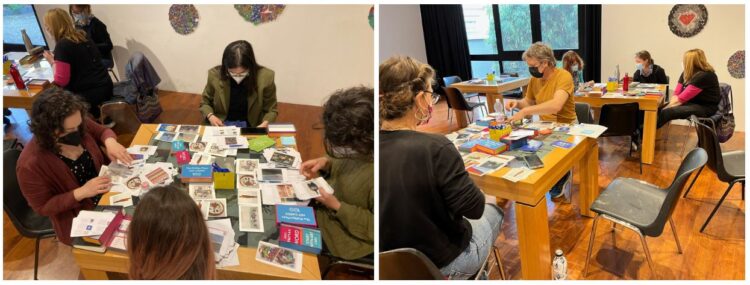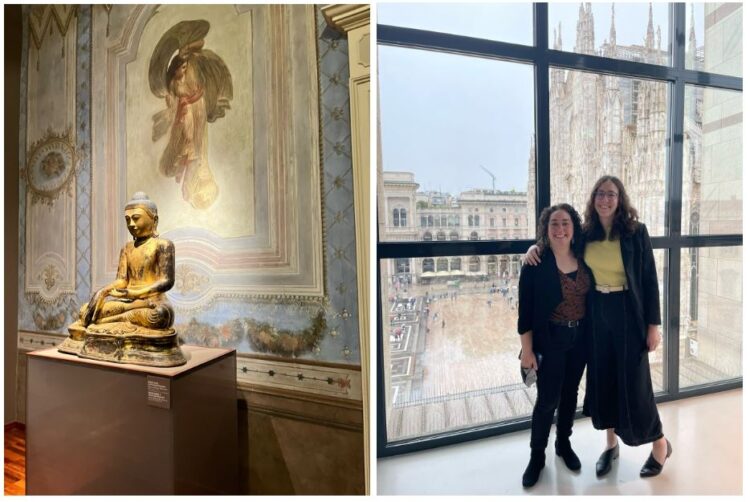Head of Teaching and Learning Hilary Katz discusses the professional development course that culminated with the exhibition Arts Integration: Inspiring Connections.
As the school year comes to a close, we also say goodbye to the fifth year of the teacher professional development course Connecting to the Core Curriculum: Building Teacher Capacity for Arts Integration with Prism.K12, a collaboration between The Phillips Collection and the University of Maryland.
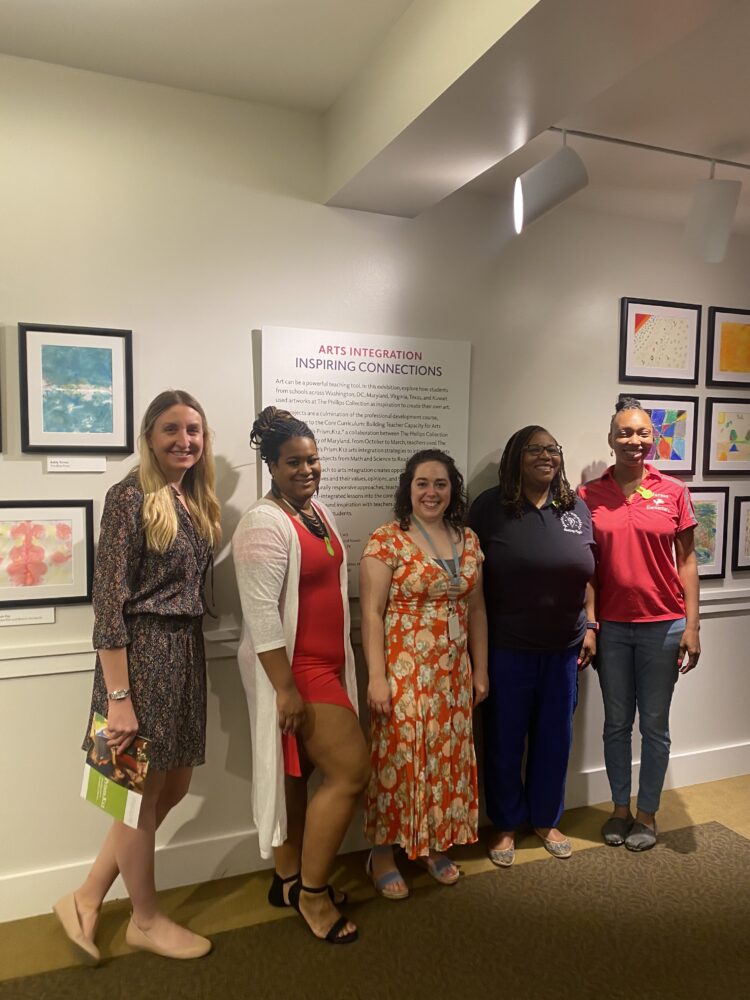
Head of Teaching & Learning Hilary Katz accompanied by some of the course teachers
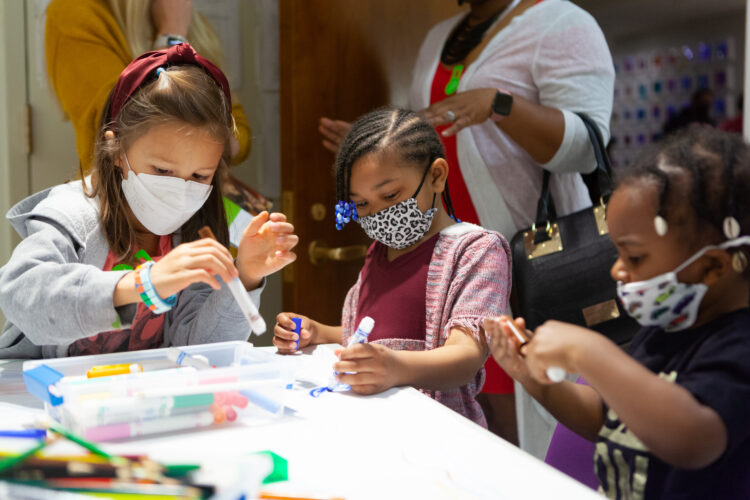
Families of the teachers creating artwork during the course exhibition opening reception
From October 2021 to March 2022, teachers used The Phillips Collection’s Prism.K12 arts integration strategies to integrate the arts across a range of subjects from Math and Science to Reading and Social Studies. Using student-centered and culturally responsive approaches, teachers developed and integrated arts-integrated lessons into their curriculum. Through this process, educators found inspiration with teachers across the world and deeper connections with their students. The resulting artworks created by their students were on view at the Phillips from April to June 2022.
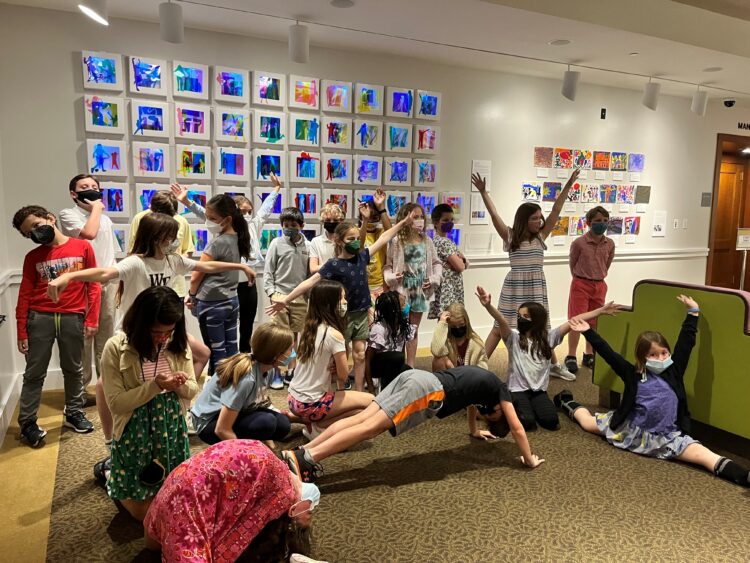
Grade 4 students from The Langley School pose like the gestures they made for their lightbox artworks
You can explore how students from schools across Washington, DC, Maryland, Virginia, Texas, and Kuwait used artworks at The Phillips Collection as inspiration to create their own art in this digital exhibition.
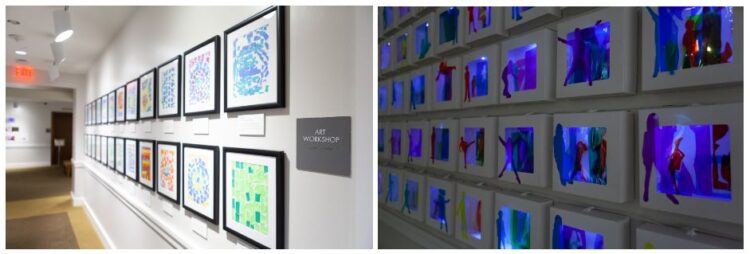
Installation views of Arts Integration: Inspiring Connections, on view at The Phillips Collection in spring 2022
During the course, we had two guest artists lead interactive workshops. Junko Pinkowski is a graphic designer, multimedia artist, and teacher of visual art and digital design. We created multimedia collages exploring our identities.
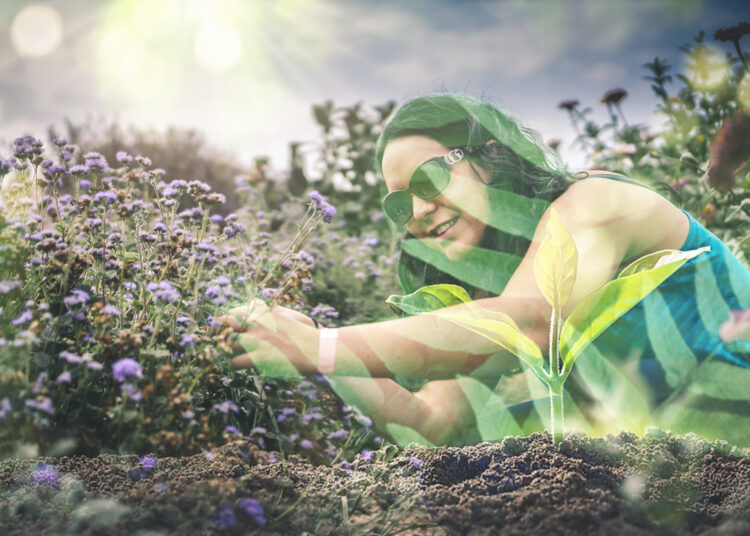
Example of the digital self-portrait collages the teachers created.
Local artist Wesley Clark also joined us, who “challenge[s] and draw[s] parallels between historical and contemporary cultural issues” in his work. We created graphite drawings of the United States, erasing and blurring the boundaries of the map.
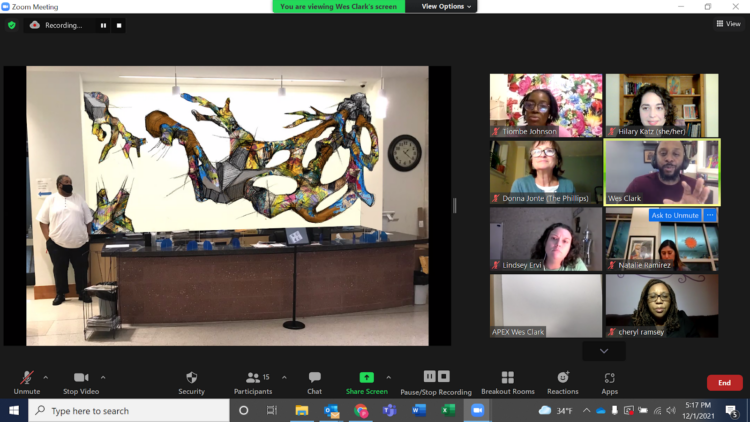
Screenshot of the teachers in conversation with artist Wesley Clark
We’re excited to continue collaborating with University of Maryland and to have our next cohort of teachers join us for our Summer Teacher Institute: The Meaning We Make at the end of July 2022.

